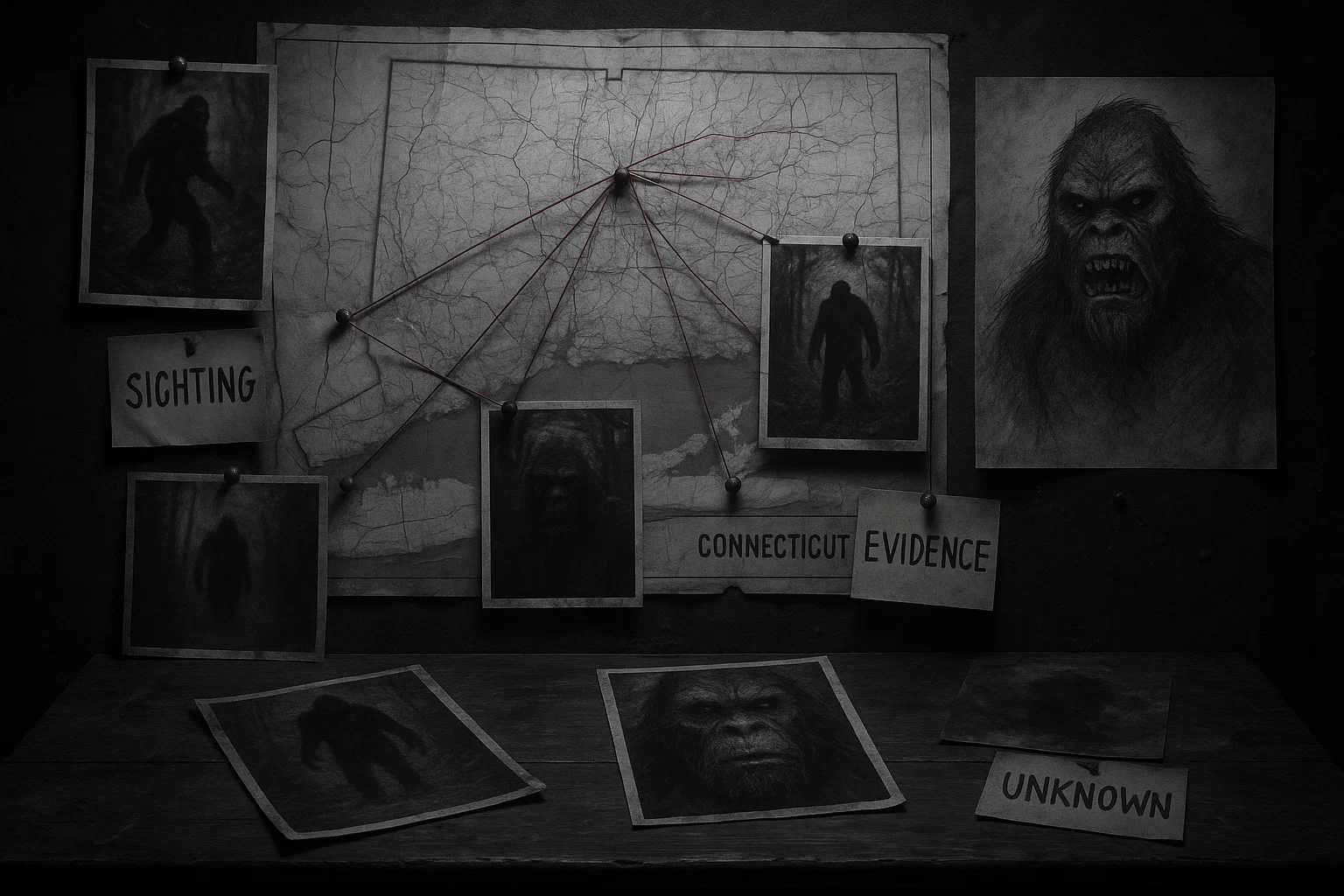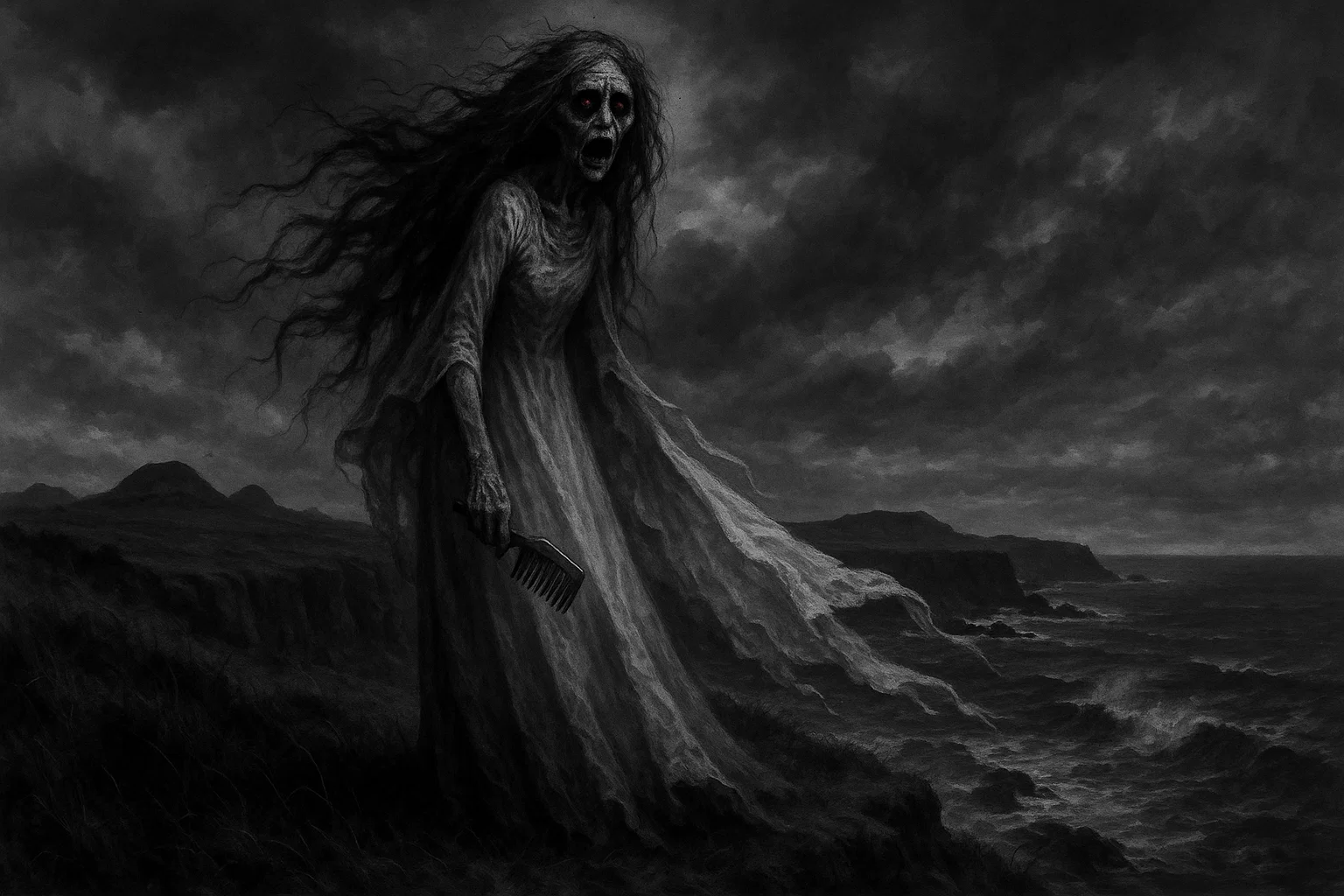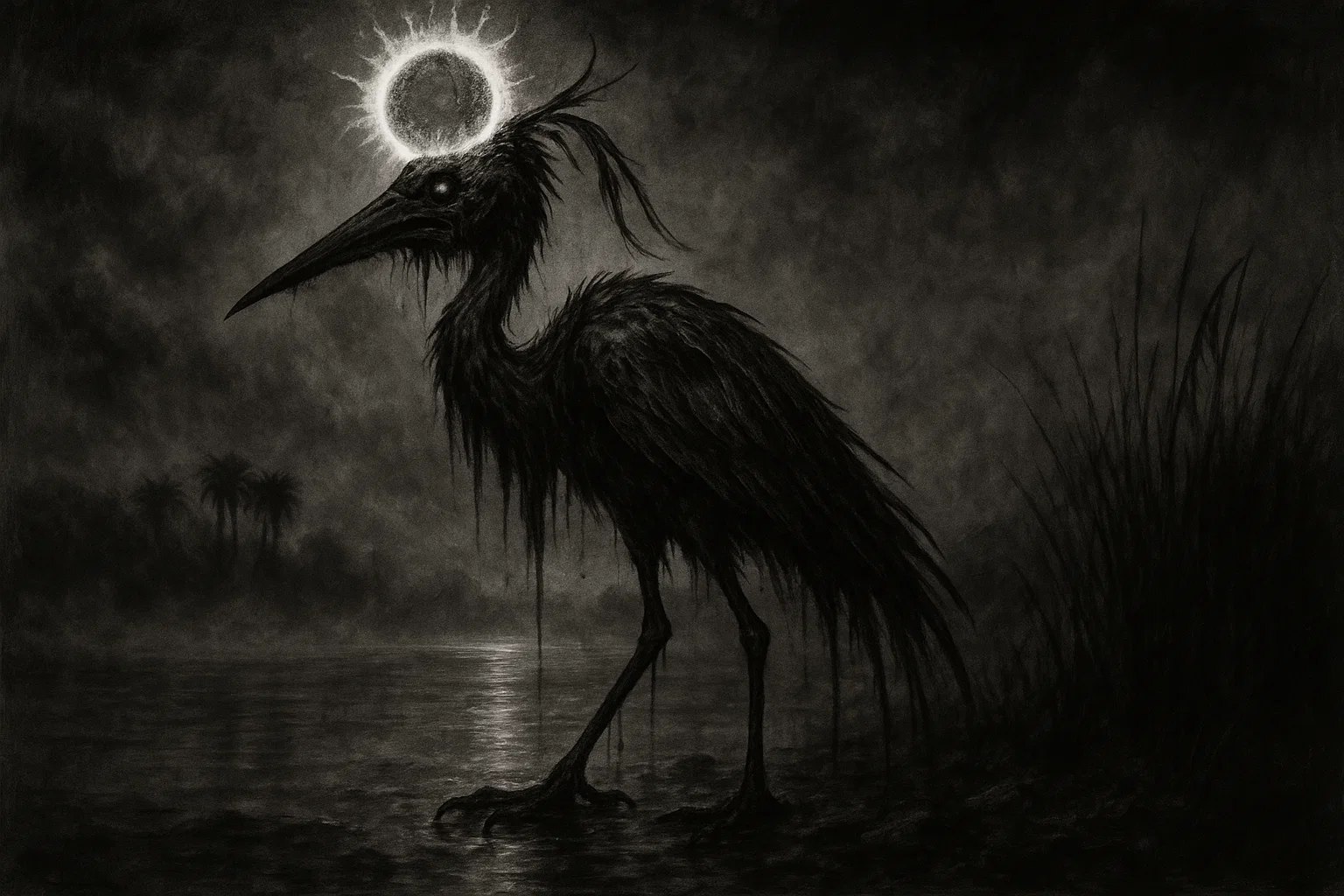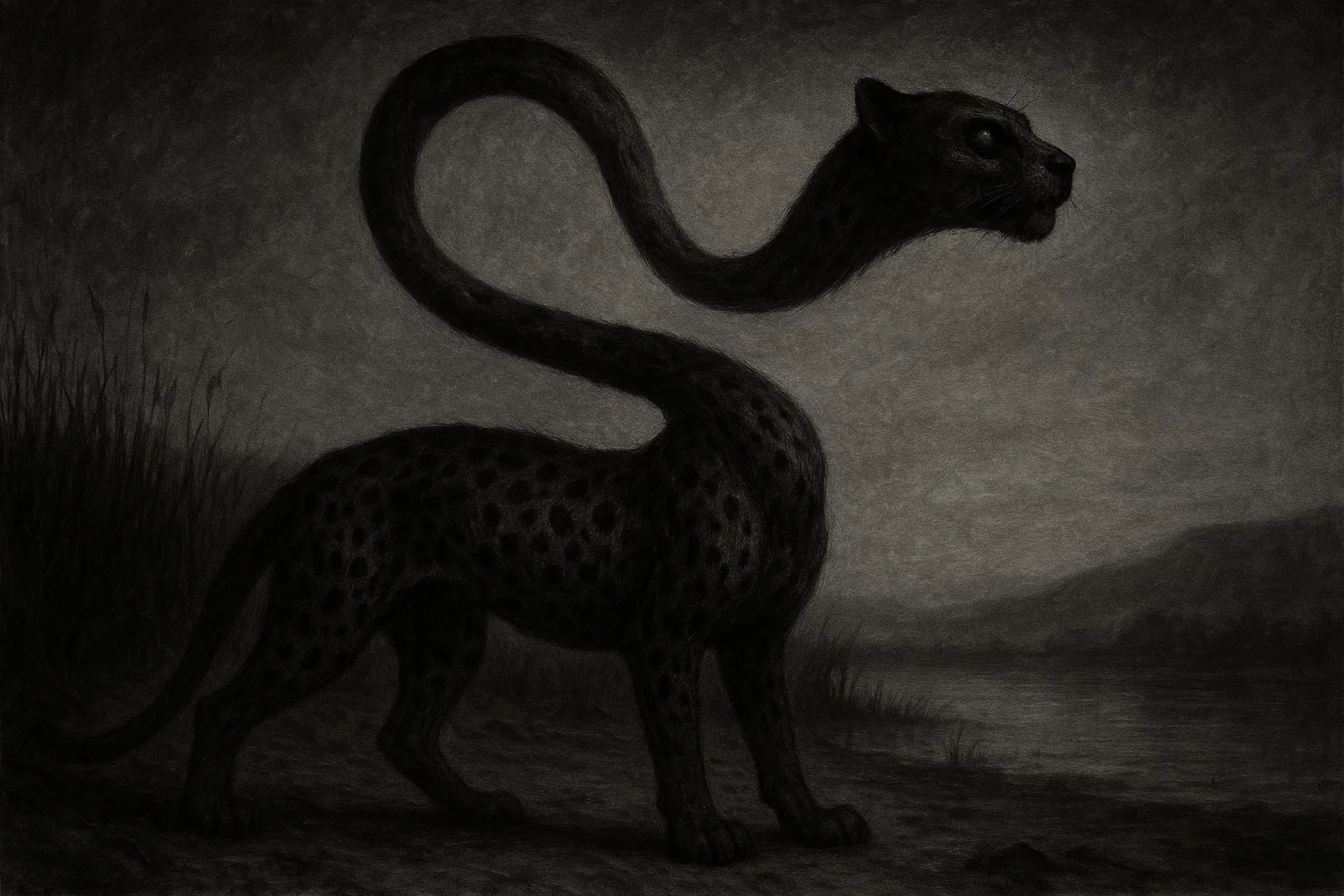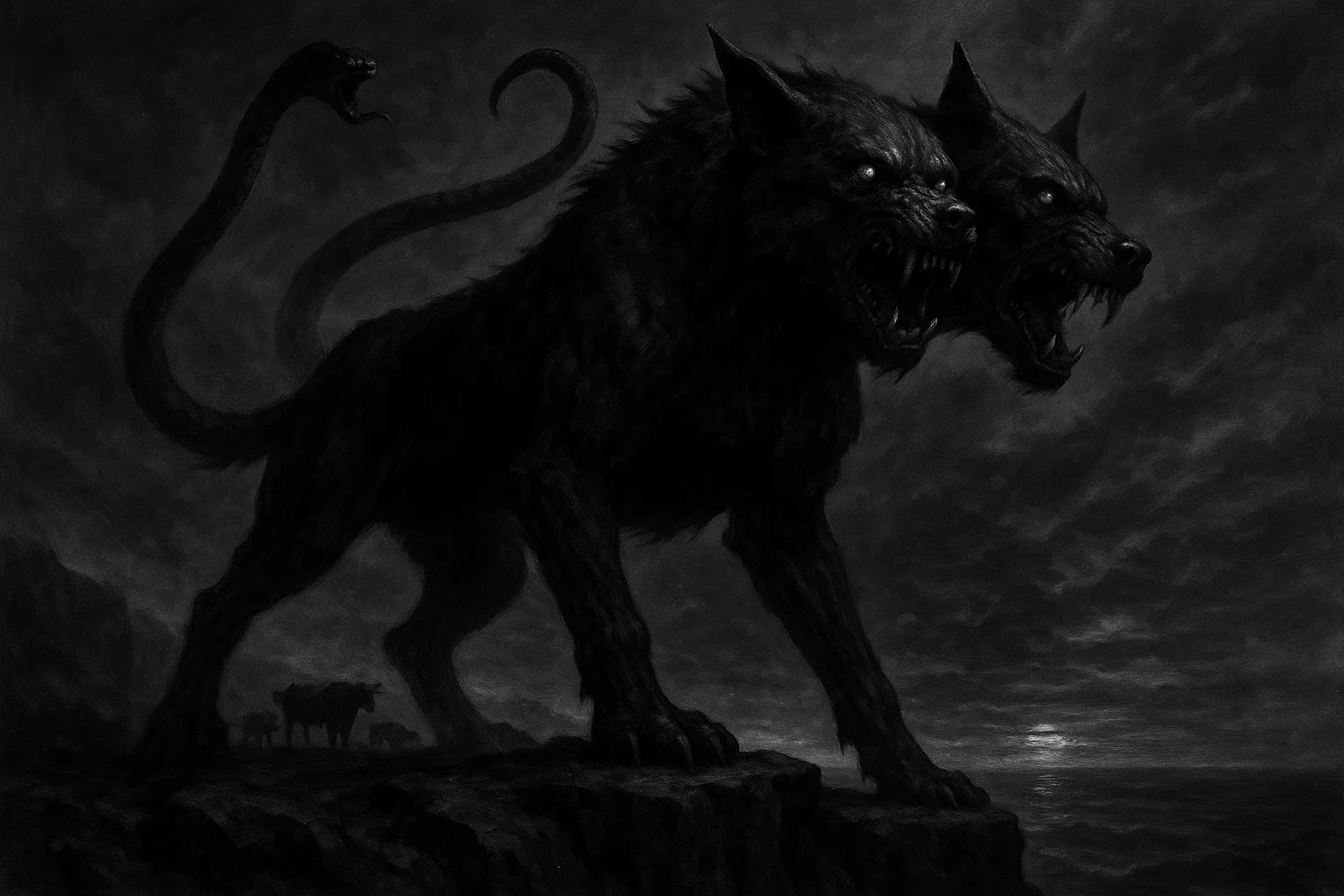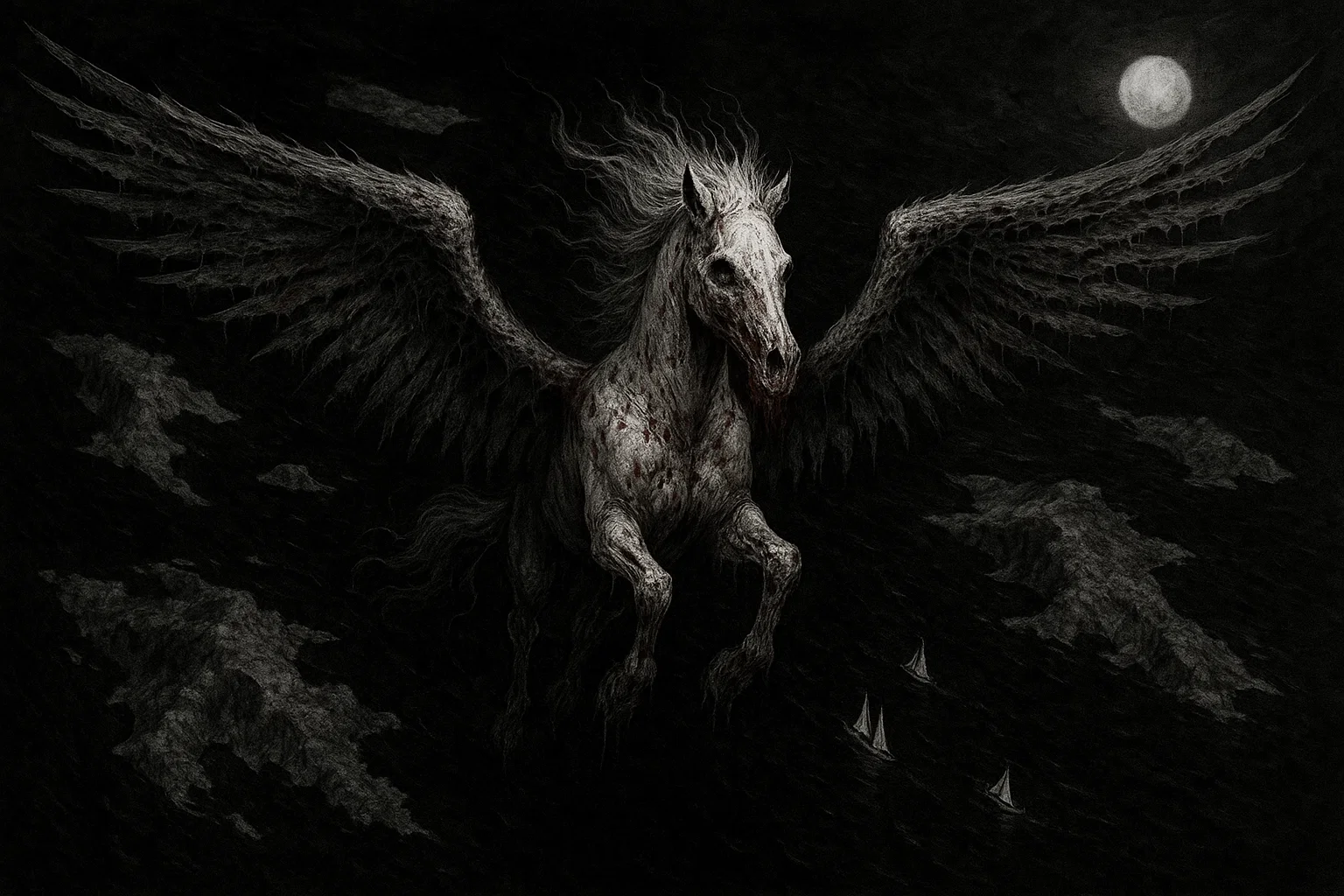Connecticut Bigfoot sightings span over seven decades, beginning with a 1953 encounter in Shelton, where children reported a towering, hairy figure near the Housatonic River. These accounts describe creatures 6–10 feet tall, with shaggy fur, eerie vocalizations, and large footprints, consistent with Sasquatch lore.
From the rolling hills of Litchfield County to the dense woodlands of Fairfield County, these sightings have sparked curiosity, skepticism, and local folklore. This article compiles all documented sightings, examines rigorous investigation efforts, and provides detailed case studies of pivotal encounters, offering a comprehensive look at Connecticut’s cryptozoology heritage for enthusiasts and skeptics alike.
Summary
Connecticut Bigfoot Sightings
Connecticut’s Bigfoot sightings, though fewer than in states like Washington or Oregon, are notable for their consistency and vivid detail. The state’s diverse ecosystems, including Pachaug State Forest, People’s State Forest, and the Appalachian Trail, provide potential habitats for a creature adept at avoiding detection.
Reports range from Class A sightings (direct visual encounters) to Class B incidents (auditory or indirect evidence like tracks or vocalizations).
The Bigfoot Field Research Organization (BFRO) has documented 26 credible sightings, with Litchfield County as a primary hotspot.
Below is a comprehensive table of all reported sightings from 1953 to 2025:
| Date | Witness | Location | Description |
|---|---|---|---|
| August 1953 | Three children | Near railroad tracks, Shelton, Fairfield County | Saw a 6.5–7 ft tall bipedal creature with dark brown/grayish hair walking along tracks by the Housatonic River. It had a primate-like face and moved swiftly. |
| November 1968 | Farm resident | Newton farm, South Kent, Litchfield County | Daytime sighting from a farmhouse in a hilly area; creature described as tall and hairy, moving through fields. |
| June 1976 | Karl S. (retired police officer) | Railroad tracks east of Newtown, Fairfield County | Observed an 8–9 ft tall, dark brown creature with long hair, basketball player build, and arms hanging low. It ran into woods after 6 seconds. |
| August 1982 | Two farmhands | Near Ellington, Tolland County | Reported a black-haired, Bigfoot-like creature in a wooded area, reported to state police. |
| August 1986 | Four campers | North of Bristol, Hartford County | Heard whoops and knocks at night, distinct from known wildlife sounds. |
| November 1987 | Local resident | Near Bakersville, Litchfield County | Vocalizations, including howls, reported in dense forest. |
| August 1995 | Fisherman | Roraback Wildlife Management Area, Litchfield County | Heard unusual late-night vocalizations, described as deep and resonant. |
| November 2004 | Hiker | Salmon River State Forest, Middlesex County | Possible activity, including heavy footsteps, reported near the river. |
| July 2005 | Dog walker | Near Norwich, New London County | Nighttime sighting while walking dogs; creature described as tall and shadowy. |
| July 2008 | Camper | Macedonia Brook State Park, Litchfield County | Heavy bipedal footsteps heard deep in the park at night. |
| February 2009 | Female resident | Near Woodstock, Windham County | Saw a tall creature peering into her kitchen window at night. |
| July 2010 | Security guard | Canaan area, Litchfield County | Heard loud screams and found 18-inch tracks in a remote area. |
| May 2013 | Local resident | Nashville Rd., Bethel, Fairfield County | Saw a dark shadow with reddish-orange eyes; heard a bellowing roar the next night. |
| May 2014 | Hunter | Near Bridgewater, Litchfield County | Large, hairy biped seen chasing deer at dusk, moving with agility. |
| January 2015 | Motorist | Near New Preston, Litchfield County | Daylight sighting of a tall, dark figure while driving on a rural road. |
| July 2016 | Fishing couple | Near Lyme, New London County | Heard possible wood knocks while fishing; sounds repeated rhythmically. |
| August 2016 | Homeowner | Near Old Mystic, New London County | Close encounter reported behind a residence; creature described as large and bipedal. |
| June 2017 | Farm resident | Farmhouse outside Torrington, Litchfield County | Ongoing activity, including knocks and sightings of a large figure, reported. |
| August 2018 | Motorist | Wilbur Cross Parkway, between Berlin and Woodbridge, New Haven County | Afternoon sighting of a Bigfoot-like creature crossing the highway. |
| November 2018 | Military serviceman | People’s State Forest, Litchfield County | Found 15-inch tracks in snow, consistent with bipedal movement. |
| October 2019 | Local resident | Connecticut Water Co. near Killingworth, Middlesex County | Sighting of a tall, hairy figure near a reservoir. |
| October 2019 | Motorists (multiple) | Pachaug State Forest, Griswold, New London County | Multi-witness sighting; creature described as 7–8 ft tall, crossing a road. |
| February 2022 | Local resident | East of Bethel, near Plum Trees Rd., Fairfield County | Saw a tall, all-black figure chasing deer, estimated at 8–10 ft tall. |
| July 2022 | Retired police officer | Lake Zoar/Housatonic River, Sandy Hook, Fairfield County | Heard distinct whoops near the river, lasting several minutes. |
| October 2023 | Resident (familiar with wildlife vocalizations) | Between Botsford and Upper Stepney, Fairfield County | Heard short-duration screams and long-duration whoops after midnight, lasting 5–10 minutes. |
| December 2024 | Motorist | 12 miles northwest of New Haven, New Haven County | Late-night sighting of a tall, hairy figure crossing a road. |
You May Also Like: Complete Guide to Alabama Bigfoot Sightings (1975–2025)
Investigation Efforts in Connecticut
Investigating Connecticut Bigfoot sightings requires meticulous effort, given the state’s dense population and limited wilderness compared to other Sasquatch hotspots.
The Bigfoot Field Research Organization (BFRO), founded by Matthew Moneymaker, leads these efforts, employing a rigorous methodology to assess credibility. BFRO investigators conduct in-person interviews, visit sighting locations, and analyze physical evidence like tracks or vocalizations.
For instance, the 1976 Newtown sighting was thoroughly vetted by Moneymaker, who noted the witness’s credibility as a retired police officer and the area’s history of sightings along the Housatonic River. Similarly, the February 2022 Bethel sighting was investigated due to its detailed description and proximity to other reports, with investigators mapping the location near Plum Trees Rd. to identify potential Sasquatch travel corridors.
Local cryptozoology groups, such as the Connecticut Cryptozoology Society, complement BFRO efforts by organizing expeditions to areas like Paugussett State Park and Litchfield County. These groups use trail cameras, audio recorders, and footprint casts to document evidence, though conclusive proof remains elusive.
A 2010 expedition in Canaan yielded casts of 18-inch tracks, analyzed for depth and stride to suggest a heavy, bipedal creature. Community events, like the Tolland Conservation Commission’s “Bigfoot and Unicorn Tracking” program in April 2024, blend investigation with public engagement, encouraging residents to report sightings while fostering interest in local folklore.
Challenges in Connecticut include the state’s small size and fragmented forests, which limit habitat compared to the Pacific Northwest. Investigators must also contend with skepticism, as many sightings occur in low-visibility conditions, such as dusk or midnight, complicating verification.
For example, the 2023 Monroe sighting, involving whoops and screams, was classified as Class B due to the lack of visual confirmation, despite the witness’s familiarity with local wildlife vocalizations. BFRO’s classification system—dividing reports into Class A (clear visual sightings) and Class B (indirect evidence)—helps prioritize credible accounts, with Connecticut’s 26 sightings evenly split between the two.
Collaboration with local authorities occasionally occurs, as seen in the 1982 Ellington sighting, where state police were notified but found no evidence. Investigators also draw on historical context, referencing the Winsted Wildman legend from 1895, when newspapers reported a hairy, agile creature in Litchfield County.
Modern technology, including drones and thermal imaging, has been employed in recent expeditions, particularly in Pachaug State Forest, to detect heat signatures or movement patterns. Despite these efforts, the absence of physical remains or clear photographic evidence fuels debate, with skeptics attributing sightings to misidentified bears or hoaxes.
Nonetheless, the consistency of witness descriptions and the BFRO’s thorough vetting process lend credibility to Connecticut’s Bigfoot reports, making the topic a compelling subject of study.
Detailed Case Studies
June 1976 Sighting by Karl S. in Newtown
On June_search_results 3, 1976, Karl S., then a teenager, experienced a pivotal Connecticut Bigfoot sighting while walking along railroad tracks between Rt. 34 and Jordan Hill Rd., east of Newtown in Fairfield County.
At approximately 100–150 feet away, Karl tripped and noticed a towering figure standing on the tracks. The creature was 8–9 feet tall, covered in 4–5-inch-long dark brown hair, with a muscular build akin to a basketball player but more robust. Its arms hung low, between its knees and hips, and its head was small with a flat, primate-like face and no visible ears.
Karl observed the creature for about 6 seconds before it turned and fled silently into the dense woods, leaving no audible footsteps despite its size.
Karl’s account is notable for its vivid detail and consistency. As a retired police officer by the time he reported the sighting to the BFRO, his background lent significant credibility. The encounter occurred in daylight, reducing the likelihood of misidentification, and the location—near the Housatonic River and Paugussett State Park—aligned with other sightings in the region.
BFRO investigator Matthew Moneymaker conducted an extensive follow-up, visiting the site and noting the area’s suitability as a Sasquatch travel corridor. The railroad tracks and nearby powerline cuts, Moneymaker suggested, could serve as pathways for a creature avoiding human contact, a pattern observed in other sightings, such as the 1953 Shelton report.
The sighting’s context enhances its significance. The Housatonic River watershed is a recurring feature in Connecticut’s Bigfoot reports, with dense forests and abundant deer providing a potential food source.
Karl reported no vocalizations, but the creature’s rapid retreat suggested an awareness of human presence, consistent with descriptions of Sasquatch as elusive and intelligent. Moneymaker’s investigation included a topographic analysis, confirming the area’s seclusion despite its proximity to Newtown’s residential zones.
The absence of physical evidence, like tracks, was attributed to the hard surface of the tracks, but the sighting’s Class A status underscores its importance in Connecticut’s cryptozoology history.
You May Also Like: Complete Guide to California Bigfoot Sightings (1886-2025)
February 2022 Sighting in Bethel
On February 17, 2022, a resident in Bethel, Fairfield County, reported a striking Bigfoot sighting near Plum Trees Rd., close to a railroad bed and powerline route. While on a phone call in their car at dusk, the witness observed approximately 30 deer racing through their backyard, pursued by a “very tall, large, all-black upright figure.”
Estimated at 8–10 feet tall, the creature was solid black with no visible color variations, distinguishing it from a human or bear. The witness, initially considering a person, ruled this out due to the figure’s immense size—2.5 times the height of the deer’s torsos—and fluid movement. The encounter lasted approximately 20 seconds before the creature vanished into the woods.
This sighting, classified as Class A by the BFRO, stands out for its detailed description and corroborating context. The witness, contacted by Matthew Moneymaker, provided a coherent account, emphasizing the creature’s size and behavior.
The presence of deer, a known Bigfoot food source, supported Moneymaker’s hypothesis that the creature was hunting, a behavior noted in other sightings, such as the 2014 Bridgewater report. The location’s proximity to the Housatonic River and historical sightings, like the 1976 Newtown encounter, suggested a regional pattern. Moneymaker’s site visit confirmed the area’s dense forest cover and access to water, ideal for a large, elusive primate.
The witness’s emotional response added depth to the report. They described a mix of awe and fear, noting the creature’s “purposeful” stride as it chased the deer. The absence of vocalizations or tracks was attributed to the frozen ground and rapid encounter, but the BFRO’s investigation included a search for secondary evidence, such as broken branches or disturbed soil, yielding inconclusive results.
The sighting’s credibility was bolstered by its occurrence in a known Bigfoot hotspot, with Fairfield County reporting five sightings since 1953. This case underscores the challenges of documenting Sasquatch—vivid eyewitness accounts often lack physical proof, fueling both belief and skepticism.
Historical and Cultural Context
Connecticut’s Bigfoot sightings are deeply rooted in its cryptozoology and folklore. The Winsted Wildman, a legendary figure from 1895, marks an early chapter in the state’s Sasquatch narrative. Reported in Litchfield County, the Wildman was described as a hairy, agile creature that evaded a large search party, cementing its mystique.
Newspaper accounts from the time sensationalized the story, drawing regional attention and sparking debates about its authenticity. Modern sightings, like those in Pachaug State Forest and People’s State Forest, echo these early reports, describing creatures with similar traits: towering stature, shaggy fur, and uncanny elusiveness.
The cultural impact of Bigfoot in Connecticut is evident in community engagement. Events like the Tolland Conservation Corps’ “Bigfoot and Unicorn Tracking” in April 2024 draw families to explore local woods, blending education with folklore.
Books like Connecticut Cryptids: A Field Guide to the Weird and Wonderful Creatures of the Nutmeg State by Patrick Scalisi document these tales, highlighting their role in shaping regional identity. Local media, such as reports on the 2023 Monroe sighting, amplify public interest, often framing Bigfoot as a quirky yet enduring mystery.
These stories resonate in rural areas, where dense forests and abundant wildlife—like deer and small mammals—support speculation about an undiscovered primate.
Skeptics argue that sightings result from misidentified animals, such as black bears, or hoaxes, citing the lack of fossils or clear photographs. Believers counter with the consistency of witness accounts, particularly from credible sources like law enforcement or military personnel, as seen in the 2018 People’s State Forest and 2022 Lake Zoar reports.
The Housatonic River and Appalachian Trail emerge as recurring features, suggesting possible migration routes. This tension between skepticism and belief fuels Connecticut’s Bigfoot lore, making it a vibrant part of the state’s cultural landscape.
You May Also Like: Complete Guide to Colorado Bigfoot Sightings (1886–2025)
Scientific and Skeptical Perspectives
The scientific community remains skeptical of Connecticut Bigfoot sightings, citing the absence of verifiable evidence. Prominent paleontologists, like Darren Naish, argue that sightings reflect misinterpretations of natural phenomena, influenced by cultural expectations of a “monstrous, human-like biped.”
A 1976 FBI analysis of alleged Bigfoot hair from Oregon, identified as deer hair, underscores the challenge of substantiating claims. In Connecticut, the small size and high population density raise questions about how a large primate could remain undetected, with critics suggesting bears or bobcats as likely culprits.
However, BFRO investigators argue that Sasquatch’s nocturnal and intelligent nature explains the lack of evidence. The creature’s reported ability to blend into forests, as seen in the 2014 Bridgewater sighting, supports this view.
Physical traces, like the 15-inch tracks in People’s State Forest (2018) or 18-inch tracks in Canaan (2010), suggest a heavy, bipedal creature distinct from known wildlife. Yet, without DNA or skeletal remains, these remain speculative. The BFRO’s focus on credible witnesses—such as the retired police officer in the 2022 Lake Zoar report—aims to counter skepticism, but the debate persists.
Environmental and Ecological Considerations
Connecticut’s environment offers a plausible, if challenging, habitat for Bigfoot. The state’s 1.8 million acres of forest, including Litchfield County’s rugged hills and Pachaug State Forest’s swamps, provide cover and resources. Deer, a reported Sasquatch food source, are abundant, with over 100,000 statewide.
Wetlands and river systems, like the Housatonic and Connecticut Rivers, offer water and travel corridors. However, urban sprawl and fragmented habitats limit large-scale concealment, unlike the vast wilderness of the Pacific Northwest. Investigators note that Bigfoot may use linear features like railroad tracks or powerline cuts, as seen in the 1976 Newtown and 2022 Bethel sightings, to navigate discreetly.
Ecological studies suggest that a large primate would require significant caloric intake, potentially unsustainable in Connecticut’s smaller forests.
Yet, reports of Sasquatch consuming vegetation, like cattails, or scavenging, as suggested in the 2018 People’s State Forest report, align with observed behaviors. The state’s mix of deciduous and coniferous forests supports diverse wildlife, potentially masking a rare creature’s presence. These factors keep Bigfoot plausible for enthusiasts, despite scientific skepticism.
You May Also Like: Complete Guide to Alaska Bigfoot Sightings (1985–2025)
Conclusion
Connecticut Bigfoot sightings, spanning 1953 to 2025, offer a compelling blend of mystery, folklore, and investigation. With 26 documented encounters, from the 1976 Newtown sighting to the 2023 Monroe vocalizations, the state’s Sasquatch narrative is rich and enduring. BFRO investigations, local expeditions, and cultural events like Tolland’s tracking program highlight the topic’s significance.
Detailed case studies, like Karl S.’s encounter and the Bethel deer chase, underscore the vividness of witness accounts, despite the lack of physical evidence.
Whether Bigfoot is a real creature or a cultural phenomenon, Connecticut’s sightings captivate the imagination, inviting readers to explore the unknown in the Nutmeg State’s shadowed forests.

